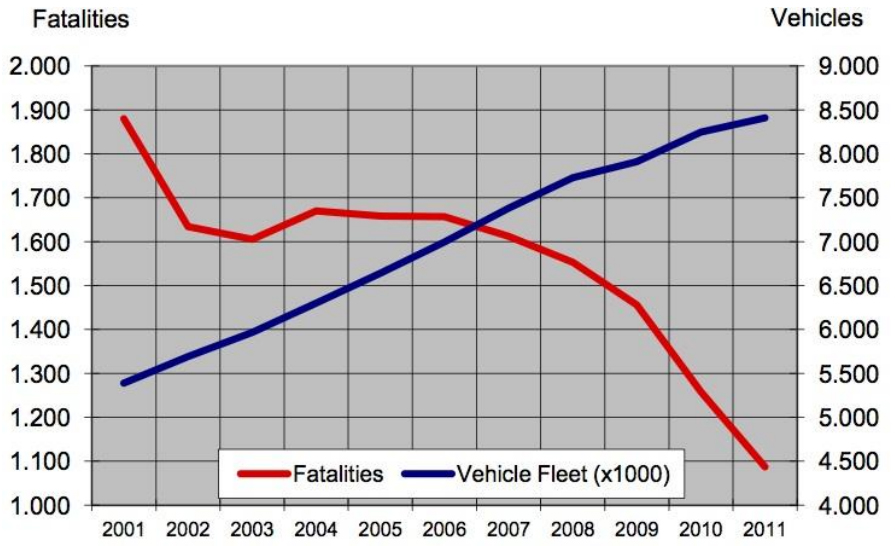
In this paper, macroscopic road safety trends in Greece are analysed using state-space models and data for 49 years (1960-2008). Seemingly Unrelated Time Series Equations (SUTSE) models are developed first, followed by richer latent risk time-series (LRT) models. As reliable estimates of vehicle-kilometers are not available for Greece, the number of vehicles in circulation is used as a proxy to the exposure. Key related events during this time-period have been entered into the model formulation as interventions. Alternative considered models are presented and discussed, including diagnostics for the assessment of their model quality and recommendations for further enrichment of this model. Important interventions were incorporated in the models developed (1986 financial crisis, 1991 old-car exchange, 1996 new road fatality definition) and found statistically significant. Furthermore, the forecasting results were compared with final actual data (2009-2010) indicating that the models perform properly, even in unusual situations, like the current strong financial crisis in Greece.
| ID | pc130 |
| Presentation | |
| Full Text | |
| Tags | accident analysis |













